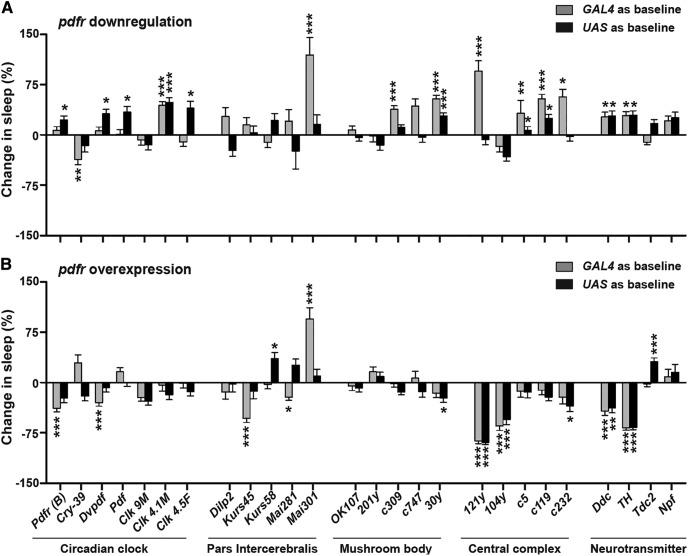Figure 2.
Screen to identify downstream targets of PDFR signaling. A, Downregulation of pdfr using UAS pdfr RNAi; UAS dcr and (B) OEX of pdfr using UAS pdfr crossed with GAL4 lines expressed in subsets of circadian clock neurons, PI, MB, central complex, and major neurotransmitter systems. Bars represent percentage increase (positive values) or decrease (negative values) in day-time sleep of experimental flies with respect to that of either GAL4 (gray) and UAS (black) parental controls. Asterisks above the bars indicate level of significance when a one-way ANOVA with genotype as factor followed by post hoc Tukey’s test was done on raw day-time sleep levels. Several lines when used to downregulate pdfr show a significant increase in day-time sleep, but do not show a corresponding decrease in day-time sleep when pdfr is overexpressed (Clk 4.1M GAL4, 30y GAL4, c5 GAL4, c119 GAL4), whereas a few lines show a significant decrease in day-time sleep when pdfr is overexpressed, but no corresponding increase in day-time sleep is seen when pdfr is downregulated (121y GAL4, 104y GAL4). However, in two lines (Ddc GAL4, TH GAL4), when pdfr is downregulated, there occurs a significant increase in day-time sleep, and when pdfr is overexpressed, there occurs a significant decrease in day-time sleep. All other details are as in Figure 1. For all genotypes, n > 24 flies. Results representative from at least two independent experiments. See also Extended Data Figures 2-1, 2-2.

